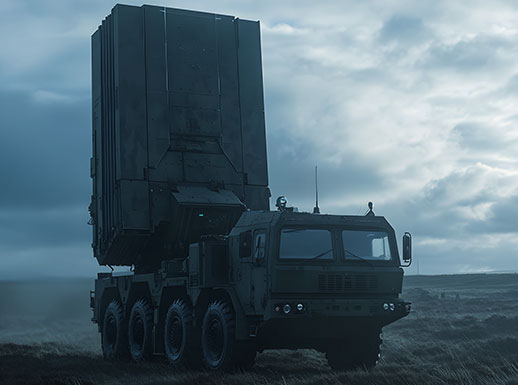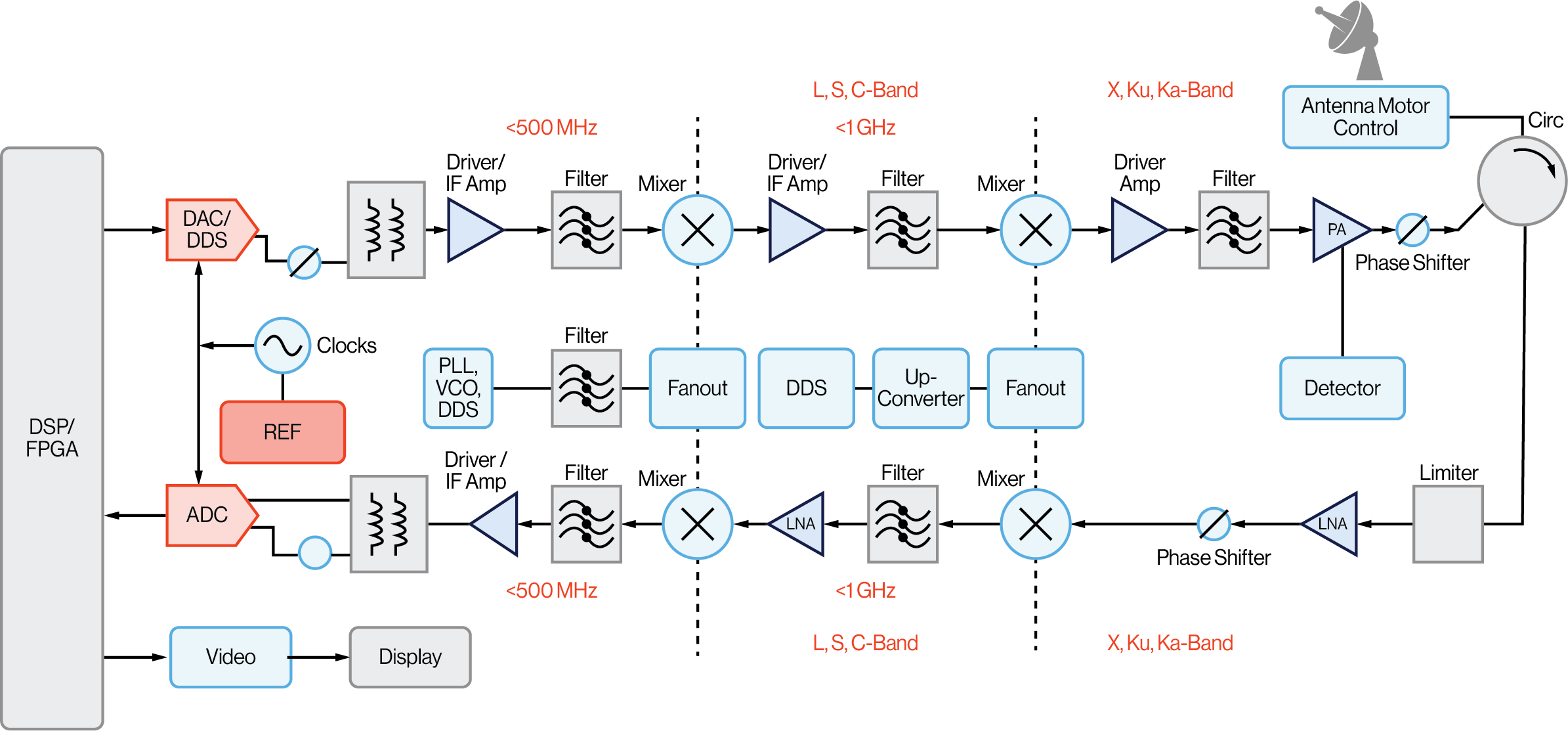
High-Powered Ground-Based Radar
Tracking the unseen with unrivaled precision
High-powered ground-based radar is essential for a wide range of modern applications, including air traffic control, weather forecasting, and defense. These systems provide a clear, real-time picture of the surrounding environment, detecting and tracking objects with unmatched precision and reliability.
Our RF (microwave to millimeter wave) components are engineered to meet the demanding requirements of high-powered ground-based radar systems as technology evolves. By leveraging next-generation materials and design, AEM's solutions make it possible to deploy high-powered radar in a wider range of fixed and mobile applications without compromising performance.

Mixers are essential for frequency conversion. They take the weak high-frequency RF signal reflected from a target and combine it with a stable, locally generated signal. Mixers are relied on for signal down-conversion, improved signal processing, and image rejection.
Low Noise Amplifiers are critical for amplifying weak radar echoes without adding significant noise of their own. While amplifying the signal, LNAs are designed to maintain the signal's fidelity and linearity, preventing distortion. High-performance LNAs ensure that even the faintest echoes can be detected and processed.
Isolators allow RF energy to pass in one direction with very low loss while absorbing or diverting energy flowing in the opposite direction. These components are critical for protecting sensitive and expensive components, impedance matching and stability, and improved system performance.
Power Amplifiers take a relatively low-power RF signal and amplify it to achieve the high-powered levels required for transmission. PAs are vital for increasing signal strength and achieving the required range and detection.
Filters selectively allow certain frequencies to pass through, acting as fundamental components for removing unwanted noise, rejecting external interference, and ensuring clean transmission signals.